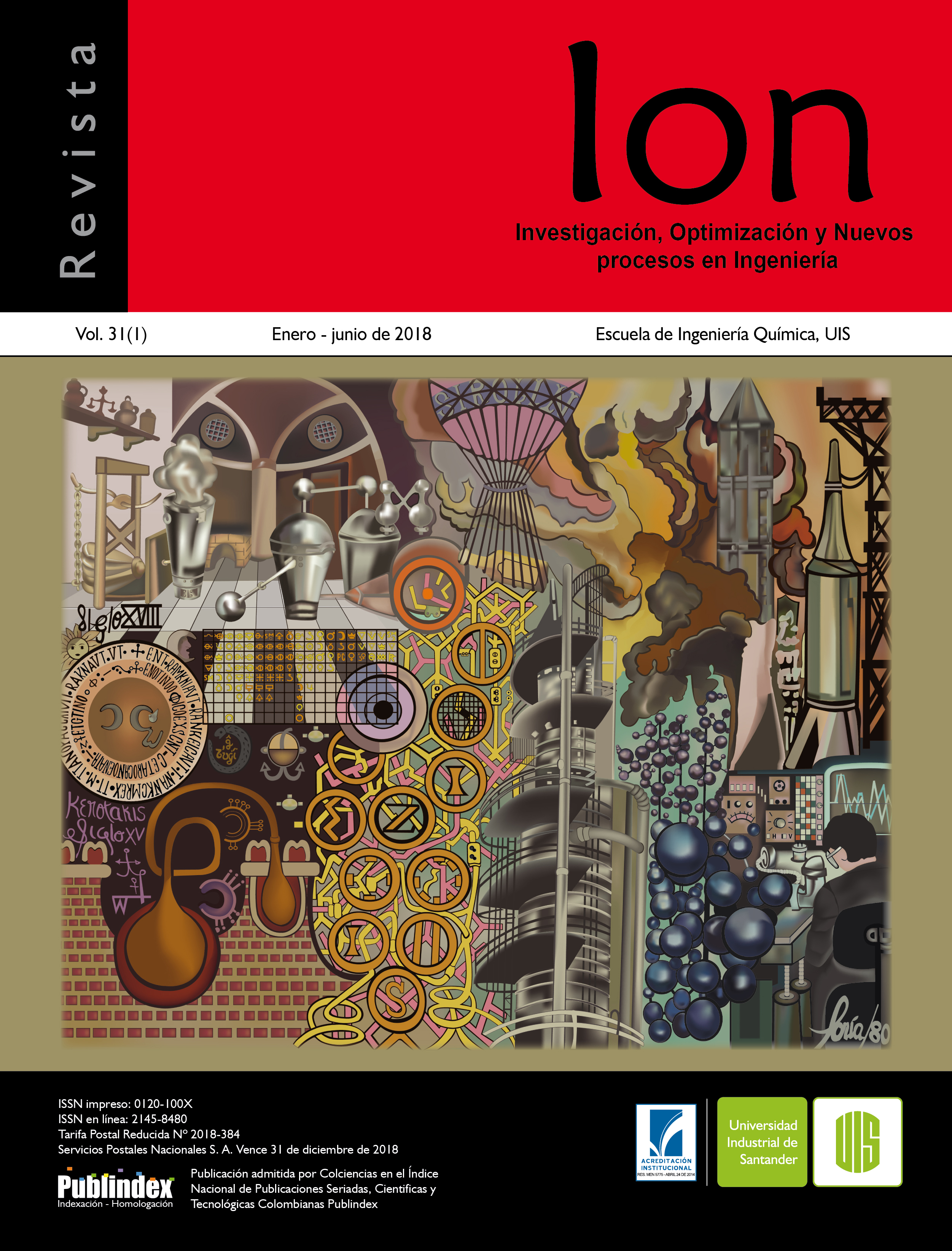Optimization of Chalcopyrite Froth Flotation Process by Sludge Removal Step
Published 2018-09-28
Keywords
- Chalcopyrite,
- Froth flotation,
- Peptizes,
- Jig screen,
- Denver Cell
How to Cite
Abstract
In this work, we study the froth flotation process of chalcopyrite, with emphasis on the influence of the presence of sludges and clays into the pulp during flotation. For this purpose, the chalcopyrite was mechanically prepared (crushing and grinding), the material was classified (between mesh 100 and 120 and the particle sizes were measured). In the process, a Jig type device for sludge removal and Denver flotation cells for the same purpose were applied. During the process, a reduction in the reagent consumption when handling the concentration step was considered. Is was observed a significant optimization in the concentration by froth flotation of the chalcopyrite by using Jig screen and the peptizes were removed during the flotation step. The hydraulic screen handling significantly improves the sludge removal, being more efficient than the use of the Denver Cell.
Downloads
References
[2] Bazin C, Proulx M. Distribution of reagents down a flotation bank to improve the recovery of coarse particles. Int. J. of Mineral Processing. 2001;61(1):1-12.
[3] Smith PG, Warren LJ. Entrainment of particles into flotation froths. An International Journal. 1989;5(1-4):123-45.
[4] Van Denventer JSJ, Van Dyk WA, Lorenzen L, Feng D. The dynamic behaviour of coarse particles in flotation froths Part I: Model. Minerals Engineering. 2002;15(9):635-45.
[5] Mu Y, Peng Y, Lauten RA. The depression of pyrite in selective flotation by different reagent systems A Literature review. Minerals Engineering. 2016;96:143-56.
[6] Lagaly G, Ogawa M, Dkny I. Clay Mineral Organic Interactions. Chapter 7.3. In: Handbook of Clay Science. Developments in Clay Science. Amsterdam: Elsevier; 2006. p. 309-37.
[7] Theng BKG. The Clay Minerals Chapter 1 -Formation and properties of Clay-Polymer Complexes. In: Developments in Clay Science. Amsterdam, Netherlands: Elsevier; 2012. p. 3-45.
[8] Lotter NO, Bradshaw DJ, Barnes AR. Classification of the Major Copper Sulphides into semiconductor types, and associated flotation characteristics. Minerals Engineering. 2016;96:177-84.
[9] Lagaly G, Dkny I. Colloid Clay Science. In: Handbook of Clay Science. Developments in Clay Science. Amsterdam, Netherlands: Elsevier; 2013 p. 243-5.
[10]Wang Y, Lauten RA, Peng Y. The effect of biopolymer dispersants on copper flotation in the presence of kaolinite. Minerals Engineering. 2016;96:123-9.
[11] Wang Y, Peng Y, Nicholson T, Lauten RA. The role of cations in copper flotation in the presence of bentonite. Minerals Engineering. 2016;96:108-12.
[12]Rahman RM, Ata S, Jameson GJ. The effect of flotation variables on the recovery of different particle size fraction in the froth and the pulp. International Journal of Mineral Processing. 2012;106:70-7.
[13]Boek ES, Coveney PV, Skipper NT. Monte Carlo Molecular Modeling Studies of Hydrated Li-, Na-, and K-Smectites: Understanding Role of Potassium as a Clay Swelling Inhibitor. Journal of the American Chemical Society JACS. 1995;117(50):12608-17.
[14]Feil NF, Sampaio CH, Wotruba H. Influence of jig frequency on the separation of coal from the Bonito seam Santa Catarina, Brazil. Fuel Processing Technology. 2012;96:22-6.
[15]Tsunekawa M, Kobayashi R, Hori K, Okada H, Abe N, Hiroyoshi N, Ito M. Newly developed discharge device for jig separation of plastics to recover higher grade bottom layer product. International Journal of Mineral Processing. 2012;114:27-9.
[16]K Ya-li, Z Jun, Z Hai-yang, G Jun. Mathematic simulation of +13 mm particles motion in jig. Procedia Earth and Planetary Science. 2009;1:819-29.
[17]Ambrós WM, Cazacliu BG, Sampaio CH. Wall effects on particle separation in air jigs. Powder Technology. 2016;301:369-78.
[18]Sampaio CH, Cazacliu BG, Miltzarek GL, Huchet F, Le Guen L, Petter CO, Paranhos R, Monteiro Ambrós W, Silva Oliveira L. Stratification in air jigs of concrete/brick/ gypsum particles. Construction and Building Materials. 2016;109:63-72.
[19]Burt R. The Role Of Gravity Concentration In Modern Processing Plants. Minerals Engineering. 1999;12(11):1291-1300.
[20]Ospina Alarcón MA, Bustamante RA. Hydrodynamic study of equipment JIG Prospect gravimetric concentration. Revista DYNA. 2015;13(1):52-8.
[21]Roese M. Concentración Gravimétrica. Basándose en la labor del Sr. Luis Alberto Mesa Saucedo. Bogotá, Colombia: Organización de las Naciones Unidas para el desarrollo industrial ONU; 2010.
[22]Valderrama J. Información tecnológica. La Influencia del Grado de Neutralización de Aminas en la Flotación Inversa de Mena de Hierro. R.M.F. Lima y M.P. Magaljaes (Brasil). Chile: Centro de información tecnológica; 2002. p. 98.
[23]Dudenkov SV, Chubor LY, Glazunov LA, et al. Fundamentos de la teoría y la práctica de empleo de reactivos de flotacion. Tercera parte. Rusia: MIR editorial; 1980.
[24]Smith RW, Scott LJ. Mechanisms of dodecyl amine flotation of quartz. Miner. Process. Extr. Metall. 1990;7(2):81-94.
[25]Mu Y, Peng Y, Lauten RA. The depression of copper activated pyrite flotation by biopolymers with different compositions. Minerals Engineering. 2016;96:113-22.

